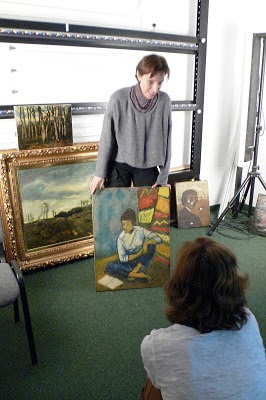Tuesday, May 13, 2014 -  ARCA,Noah Charney,Poland,Polish looted art,technology
ARCA,Noah Charney,Poland,Polish looted art,technology
 No comments
No comments
 ARCA,Noah Charney,Poland,Polish looted art,technology
ARCA,Noah Charney,Poland,Polish looted art,technology
 No comments
No comments
Ginanne Brownell quotes ARCA Founder Noah Charney in "New Arms for Fighting Back Against the Looters" (International New York Times, May 8)
ARCA Founder Noah Charney quoted in GINANNE BROWNELL's piece on MAY 8, 2014, "New Arms for Fighting Back Against the Looters" in the International New York Times:
WARSAW, POLAND — The Division of Looted Art at Poland’s Ministry of Culture is a small office with a big mandate. Since 1992, the four-person unit has been charged with collecting and digitizing information about the more than 63,000 objects stolen from the Polish state, churches and private citizens during World War II. Until now, the division’s website was only able to exhibit 3,000 of the objects. Thanks to an upgrade and reintroduction in March, today almost 14,000 lost pieces — including Raphael’s “Portrait of a Young Man,” taken by the Nazis from a family collection in Krakow — will have a virtual home.
“The Internet has become the main source of finding information on Polish looted art,” said Karina Chabowska, an employee, seated next to several filing cabinets full of photographs and files about stolen works waiting to be uploaded. “The new site will be important to exchange information with auction houses, with people from museums and also to give them some tips of what to do if they find pieces of art that could have been looted or stolen from Poland.”
Technology has given new impetus to the search for lost and stolen art. Through projects ranging from websites to digital fingerprinting of artworks, governments and organizations are now able to share information and images of missing works widely, allowing the images to be recognized and, it is hoped, returned.
“For people interested in lost treasure, technology has made it much more likely that we will find things like, for example, locations to excavate to find dozens of other hiding places,” said Noah Charney, an art historian and founder of the Association for Research into Crimes Against Art. “So technology has made the world both smaller and more transparent.”


